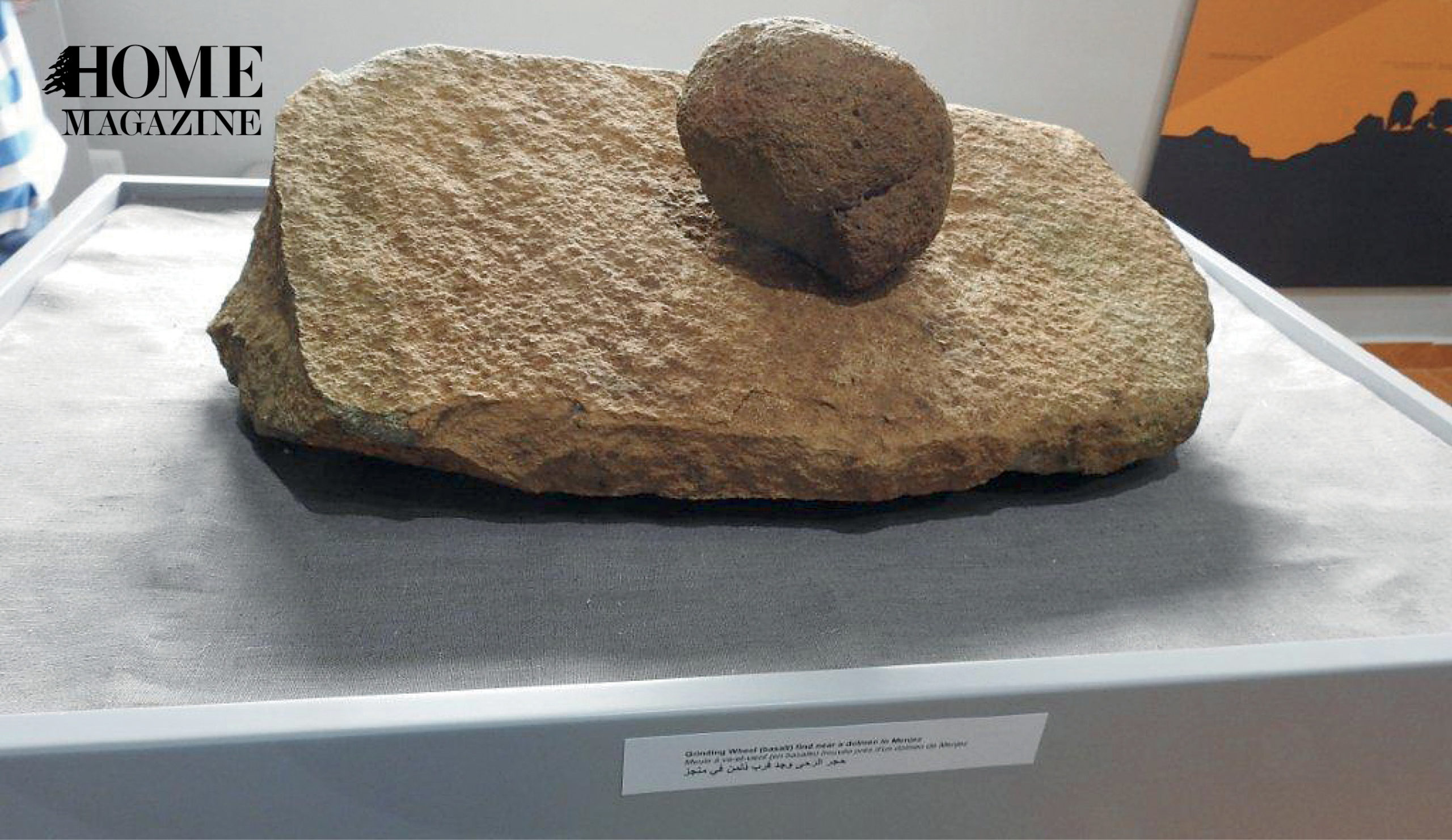Megalith
/ˈmɛɡəlɪθ/
Is this the type of construction that resembles Stonehenge, where great stones are used without mortar or concrete to build a monument or a structure? There definitely should be a mistake; we do not have such structures in Lebanon. Or do we?
Menjez is a village in Akkar, in the north of Lebanon, some 130 kilometers from Beirut, and close to the Syrian border. The village is located on a plateau surrounded by fields, mainly populated with olive trees, overlooking the Nahr le-Kebir (the great Southern river between Lebanon and Syria). It is an ancient village, distinguished by its basalt constructions (a black stone that can only be found in Akkar), giving the village a special charm and character that is different from what can be found in other Lebanese villages.
The various archaeological excavations conducted in Menjez led to the discovery of numerous sites with a long history of human occupation. The artifacts collected dated the oldest human occupation to the Pottery Neolithic period (around 7,000 B.C.).
 Photo by Oussama Kallab – Grinding wheel (basalt) found near a Dolmen in Menjez
Photo by Oussama Kallab – Grinding wheel (basalt) found near a Dolmen in Menjez
The most spectacular archaeological findings in Menjez are the megalithic monuments, discovered in the 1940s by the Jesuit fathers. Father René Mouterde, Society of Jesus (S.J.), noted the presence of these monuments during his investigations in the Akkar region. In the 1950s and 1960s, Father Maurice Tallon, S.J., researched and registered these monuments and invested in extensive excavation and architectural investigations. He recorded some 100 megalithic monuments, in Menjez and other villages in its surroundings.
Several necropolises dating to the Chalcolithic or Early Bronze Age period were identified in the Menjez territory.
Each cemetery contained around 10 megalithic tombs — also known as dolmen chambers — all made of basaltic stone. The chambers are circular, semicircular, or quadrangular shape with a south-oriented passage. Great stone blocks of nearly 1.6 meters in height constitute the limits of the funeral space. The deceased laid on a pavement also made of slabs of great stone. Evidence to determine what the roofs looked like are very scarce; one possibility is that they were covered with great flat stones which constituted a corbelled cover. An enclosure made of great basalt blocks surrounded the main chamber.
During the excavation campaigns conducted by Père Tallon, very few human remains were found — most of which were fragmented — thus making it difficult to determine the funerary practices. The deceased were accompanied in their journey, with offerings for the dead: ceramics, seals, arrowheads, bracelets, and pearls made of various minerals were discovered in the dolmens. Thanks to the artifacts, the construction can be historically pegged to the end of the Chalcolithic or beginning of the Early Bronze Age (circa 3500 B.C.).
Some dolmens bear representations of snakes on their exposed slabs. Symbolically, snakes represent fertility, rebirth, immortality, and healing. They are also depicted as guardians of a sacred place.

Several ruins of houses are also still visible near some of the dolmens. The houses are also made of megalithic blocks; some of them have a rectangular shape with a door facing south while others have double apses.
Taking a walking tour to discover those megalithic tombs is now possible thanks to the initiative of the Menjez municipality, in addition to the collaboration between scholars of different institutions toward conserving, preserving, and presenting the 11 dolmens in Menjez and its vicinity. With the financial aid by the British Councils “Small Grants for the Cultural Protection Fund,” The municipality, the Directorate General of Antiquities, the University of Geneva, the Museum of Lebanese Prehistory of Université Saint- Joseph de Beyrouth, and the Château- Musée of Belestia Prehistory Museum have put their efforts together to successfully promote Lebanon’s wealth.
Walking tours allow for the discovery of the megalithic necropolis. On the other hand, Beit Al-Tourath showcases some replicas of the artifacts found during the excavation campaigns of the dolmens, along with explanations of the megalithic monuments and societies, as well as other archaeological sites in the vicinity. Do not miss it. The two-hour-long trip to Menjez is worthwhile.
Practical information:
The Heritage House opening hours: Saturday and Sunday from 10 a.m. to 6 p.m. All year upon reservation.
Two tours are available: one-hour walking tour and two-hour hike.
You can book a local guide for the tours and to visit the heritage house by calling: +961 76 658606 or sending an email: menjez.heritage@gmail.com


































 by
by